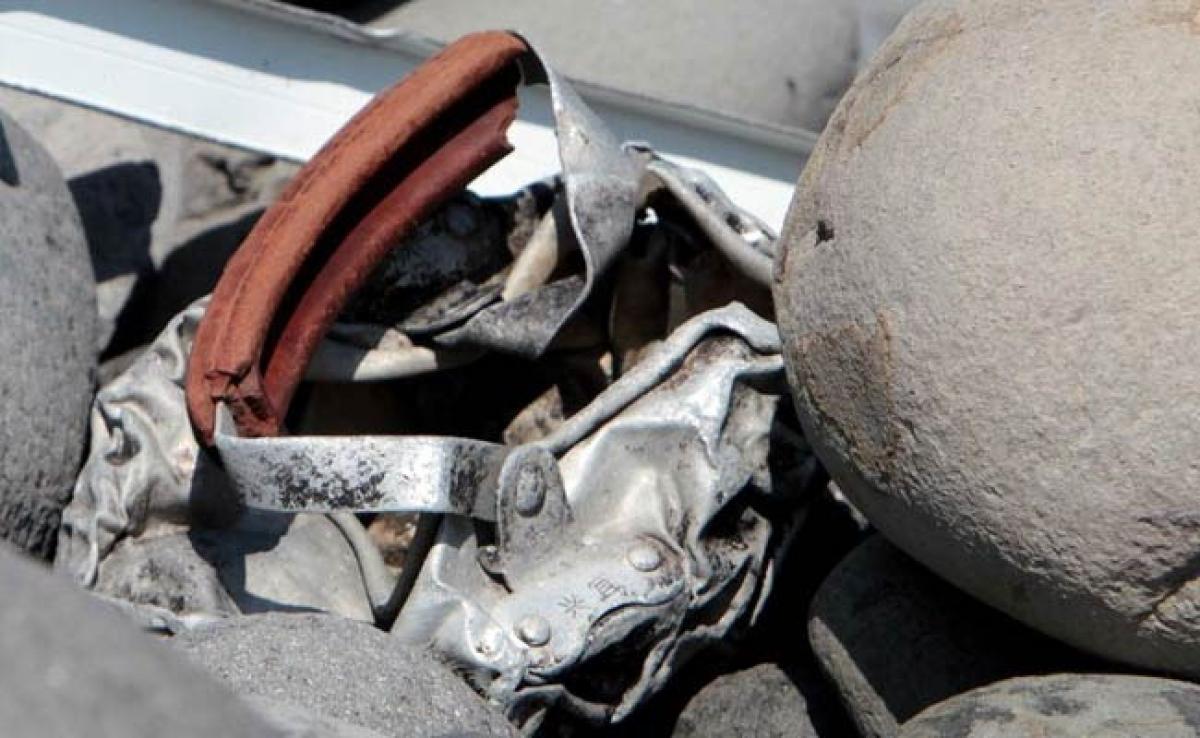Live
- Pawan Kalyan praises Chandrababu Naidu at Swarnandhra Vision 2047 document launch
- Chirec International looks to transform education with Chirec 2.0 vision
- Telangana CM Revanth Reddy Responds to Allu Arjun's Arrest in Delhi
- Uddhav Thackeray to PM Modi: Pay attention to Bangladesh, act to end Hindus’ misery
- Allu Arjun Arrested: KTR Reacts on X, Calls Arrest Unfair
- Bold steps by Modi govt in reviving Indian heritage, culture: Union Minister
- What are the charges against Allu Arjun: Understanding the Charges Against Him
- Allu Arjun Objects to Arrest Procedure, Requests Breakfast and Change of Clothes
- ‘Fear’ movie review: A gripping suspense thriller
- Phenom Successfully Hosts IAMPHENOM India, Transforming the Future of Work with AI, Automation, and Talent Experience
Just In

x
Highlights
Barnacles on a wing part that washed up on a remote Indian Ocean island could yield new clues to the fate of Malaysia Airlines Flight MH370 if it is from the plane, experts said today.
Barnacles on a wing part that washed up on a remote Indian Ocean island could yield new clues to the fate of Malaysia Airlines Flight MH370 if it is from the plane, experts said today.
.jpg)
The hunt for the Boeing 777, which disappeared on March 8 last year en route from Kuala Lumpur to Beijing with 239 people aboard, has focused on the southern Indian Ocean off Australia.
No trace of it has so far been found.
Last week a two-metre long wing component called a flaperon, with barnacles encrusted on its surface, was found on the French island of La Reunion, igniting hopes that one of the world's greatest aviation mysteries could be solved.
The part has been confirmed as coming from a Boeing 777.
Technical experts, including from US aerospace giant Boeing, are due to begin from Wednesday examining the debris in France to determine conclusively whether it belonged to the flight.
Scientists said the main information the barnacles would provide was how long the piece had been in the water.
"They might be able to age the barnacles and if the barnacles are older than the crash date that would suggest it was not the wreckage," said Melanie Bishop, associate professor in biological sciences at Sydney's Macquarie University.
Further analysis of the shells could indicate the temperature of the waters the piece had travelled through, she added.
Depending on the species of barnacles found on the flaperon, which appears relatively clean, investigators might also be able to estimate where the piece has been, scientists said.
Geology expert Hans-Georg Herbig said that if the barnacles were found to be from the Lepas family, "we can then say with certainty that the accident took place in cold maritime areas to the southwest of Australia".
"If it has cold-water barnacles on it that might tell them it went down further south than they think. Or if it's got only tropical barnacles, that might tell them it went down further north," added Shane Ahyong, a crustacean specialist from the Australian Museum.
Piece together what happened
But he said some oceanic barnacles were so widespread that pinpointing their precise origin would likely be impossible given the lack of genetic and population information about them.
"There are barnacles that occur in the east Indian Ocean, there are barnacles that occur in the west Indian Ocean and that can help narrow the range," Ahyong said.
"(But) we are talking about one side of the Indian Ocean opposed to the other side.
"The key thing they should be able to tell using these barnacles is how long the wreckage has been in the water and then they can see if that matches with the other evidence in terms of the date in which it went down, the time they think it has been floating."
Mark Hamann, an associate professor at James Cook University in Townsville who has investigated barnacles on turtles as part of his research, agrees the find could be one of several different tools which help piece together what happened to MH370.
"It's one bit of information that may help solve the puzzle. And it will be a little bit of information that we didn't have before. It's better than zero. Hopefully it can help," he said.
Ahyong, who said forensics sometimes looked at barnacles to determine how long a human body has been in the water, said the flaperon may also hold other marine clues.
He said part of a fishing vessel which was wrecked some years ago in a typhoon off Taiwan once found its way to New Zealand, and the biggest clues to its journey were the other species hitching a ride on it.
"That wasn't the barnacles, that was other crustaceans such as crabs and shrimp," he said.

Next Story
More Stories
ADVERTISEMENT
© 2024 Hyderabad Media House Limited/The Hans India. All rights reserved. Powered by hocalwire.com







